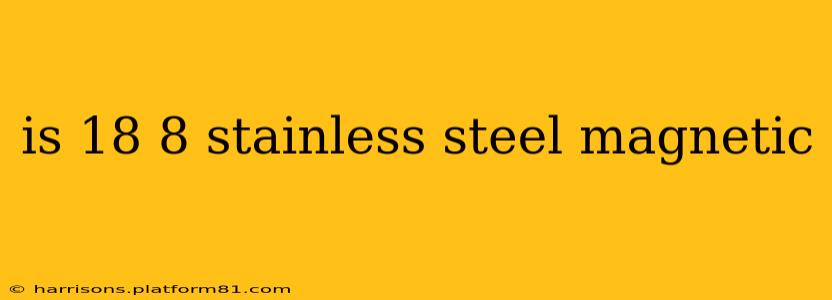The magnetism of stainless steel, specifically 18/8 (also known as 304), is a common question with a nuanced answer. Simply put, some 18/8 stainless steel is magnetic, while some is not. This seemingly contradictory statement arises from the variations in the material's composition and processing.
Let's delve into the reasons behind this variability and explore the factors influencing the magnetic properties of 18/8 stainless steel.
Why is Some 18/8 Stainless Steel Magnetic?
18/8 stainless steel is primarily composed of iron, chromium, and nickel. Iron is a ferromagnetic material, meaning it's strongly attracted to magnets. Chromium and nickel, however, are not ferromagnetic. The magnetic properties of 18/8 stainless steel depend heavily on the crystalline structure of the iron atoms within the alloy.
-
Austenitic Structure: Most 18/8 stainless steel is austenitic. In this structure, the chromium and nickel atoms effectively disrupt the regular arrangement of iron atoms, preventing the formation of magnetic domains. This results in non-magnetic stainless steel.
-
Ferritic Structure: However, variations in manufacturing processes, specifically the cooling rate after fabrication, can lead to the formation of a different crystalline structure, known as a ferritic structure. In this case, the iron atoms align more readily, making the steel magnetic.
-
Cold Working: Another influencing factor is cold working (deformation at room temperature). This process can induce some degree of magnetism in even typically non-magnetic austenitic stainless steel. The extent of magnetism depends on the intensity and nature of the cold working.
What Causes the Difference in Magnetic Properties?
The key factor influencing magnetism in 18/8 stainless steel is the precise ratio of chromium and nickel in the alloy. Slight variations in these percentages, even within the generally accepted range for 18/8, can affect the crystal structure and, consequently, the magnetic susceptibility. Manufacturing processes also play a crucial role.
Further adding to the complexity, different manufacturers may have slight variations in their production techniques, leading to inconsistent magnetic properties even within the same grade of 18/8 stainless steel.
How Can I Tell if My 18/8 Stainless Steel is Magnetic?
The simplest method is to use a magnet. A strong neodymium magnet will provide a clearer indication than a weaker magnet. If the magnet sticks strongly, the stainless steel is likely magnetic. If there's only a very slight attraction, or none at all, the steel is likely non-magnetic.
Is Magnetic 18/8 Stainless Steel Inferior?
No, the presence or absence of magnetism in 18/8 stainless steel doesn't inherently indicate inferior quality. Both magnetic and non-magnetic variants possess similar corrosion resistance and other beneficial properties. The magnetism simply reflects a difference in the crystalline structure resulting from manufacturing processes.
What Applications Use Magnetic 18/8 Stainless Steel?
While less common than non-magnetic 18/8, magnetic varieties find applications where a slight magnetic property might be useful or inconsequential.
In conclusion, the magnetism of 18/8 stainless steel isn't a simple yes or no answer. It's dependent on subtle variations in composition and manufacturing. Understanding these factors helps to appreciate the diversity within this widely used material.
